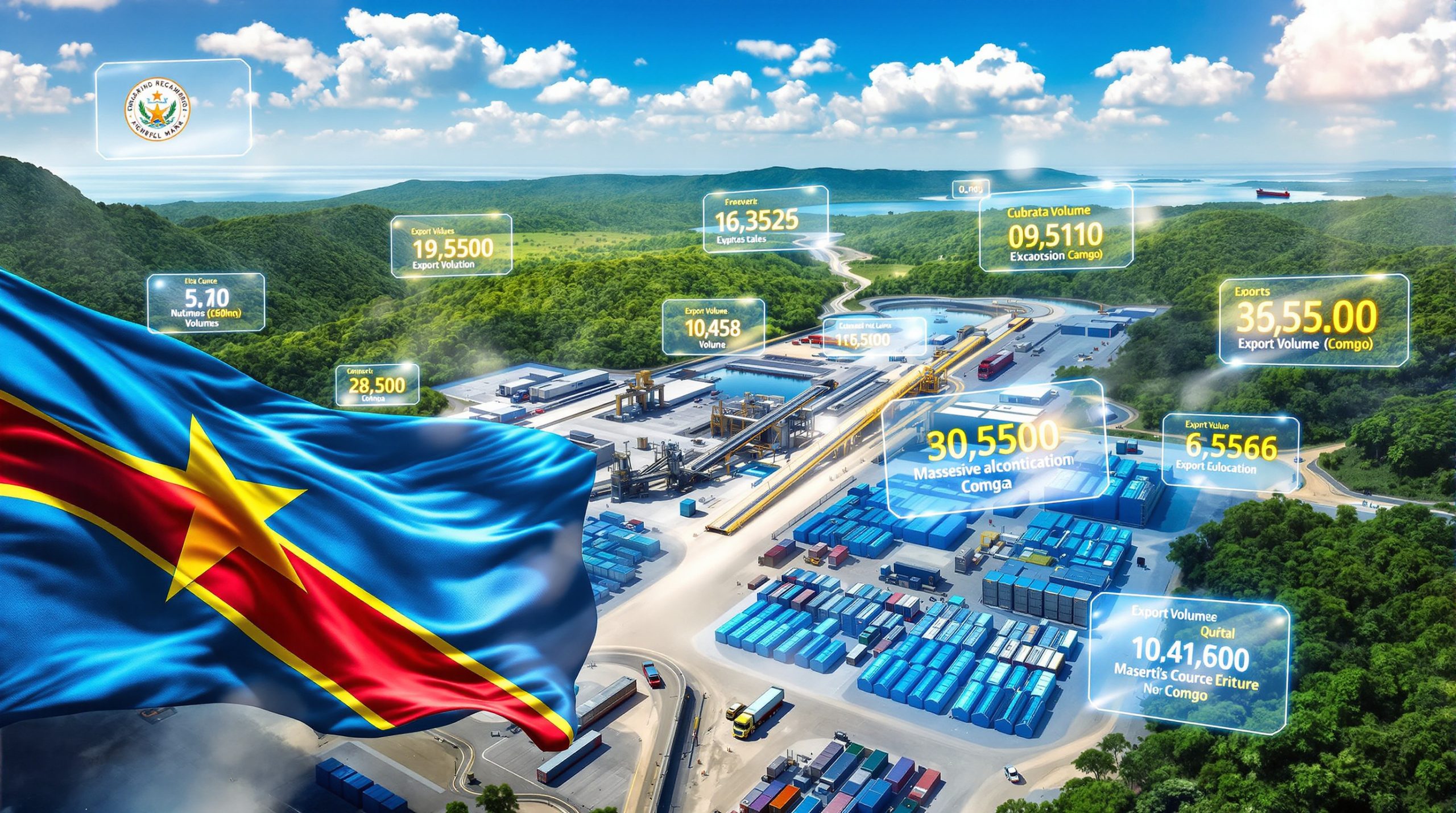The ferro-chrome industry stands at a critical juncture as ferro-chrome supply chain shifts 2025 reshape global commodity flows. This essential stainless steel ingredient, containing 50-70% chromium content, represents approximately 10-15% of total stainless steel composition and commands a substantial market presence across automotive, construction, and industrial sectors.
The magnitude of these transformations cannot be overstated. Traditional sourcing patterns that have defined the industry for decades face unprecedented disruption, with South African production experiencing dramatic reductions while alternative suppliers scramble to fill the void. These ferro-chrome supply chain shifts 2025 represent the most significant structural realignment since the 2008 financial crisis. Furthermore, insights from South African beneficiation insights highlight the broader implications for mineral processing strategies in the region.
Defining Ferro-Chrome's Strategic Importance
Ferro-chrome serves as the primary vehicle for introducing chromium into stainless steel production, making it indispensable for manufacturing corrosion-resistant materials. The alloy's strategic importance extends beyond mere metallurgical necessity, as it directly influences the cost structure and availability of stainless steel across global markets.
Production economics heavily favor regions with stable, low-cost energy infrastructure due to the energy-intensive nature of ferro-chrome smelting. Electricity costs can represent 25-30% of total production costs, making energy pricing a critical competitive factor in determining viable production locations.
Market Size and Current Dynamics
Global Ferro-Chrome Market Overview 2025
| Metric | 2024 | 2025 (Est.) | 2026 (Proj.) |
|---|---|---|---|
| Global Production | 12.8M tonnes | 11.5M tonnes | 12.2M tonnes |
| Average Price/lb Cr | $0.89 | $1.03 | $1.15 |
| China Consumption | 8.2M tonnes | 8.6M tonnes | 9.1M tonnes |
| Supply Gap | Minimal | 1.3M tonnes | 0.6M tonnes |
Price volatility has emerged as a defining characteristic of the current market environment. According to Fastmarkets data, ferro-chrome 50% Cr import prices dropped to $0.79 per lb contained Cr by the end of 2024, marking the lowest level since January 2021. However, supply constraints drove prices to peak at $1.05 per lb contained Cr during summer 2025, before settling at $1.03 per lb contained Cr in October 2025.
How Have Production Cuts Reshaped the Global Supply Landscape?
The most profound ferro-chrome supply chain shifts 2025 stem from dramatic production reductions across South Africa, historically the world's dominant ferro-chrome supplier. These cutbacks have created ripple effects throughout global supply networks, forcing buyers to fundamentally restructure their procurement strategies.
African Production Decline Analysis
South African ferro-chrome production faces unprecedented challenges, with industry analysts projecting a catastrophic decline from 3.0-3.3 million tonnes in 2024 to approximately 2.0 million tonnes in 2025. Robert Cartman, a Fastmarkets senior analyst, suggests that production could fall even further in 2026, potentially reaching just 1.0-1.5 million tonnes if current shutdown trends continue.
The Glencore-Merafe joint venture exemplifies these challenges, with attributable ferro-chrome output falling 28% in the first half of 2025 to 433,000 tonnes, compared to 599,000 tonnes in the same period of 2024. This dramatic reduction reflects broader industry pressures affecting South African producers, as detailed in the South African beneficiation insights analysis.
"The reduction in African ferro-chrome output has created the largest supply gap in the industry since the 2008 financial crisis, fundamentally altering how global buyers approach procurement and risk management."
Energy Cost Impact on Production Economics
Electricity costs have emerged as the primary constraint on South African ferro-chrome operations. The energy-intensive nature of ferro-chrome smelting requires substantial electrical power, making producers particularly vulnerable to utility pricing changes and supply reliability issues.
Key Energy-Related Challenges:
- Unstable energy pricing creating operational uncertainty
- High electricity costs relative to competing production regions
- Energy supply reliability concerns affecting continuous smelting operations
- Take-or-pay electricity agreements requiring minimum consumption regardless of production levels
The National Energy Regulator of South Africa (NERSA) has provided some relief by approving the relaxation of take-or-pay requirements from 70% for the Glencore-Merafe venture and Samancor for six months starting August 1, 2025. However, this temporary measure addresses symptoms rather than underlying structural challenges.
Corporate Strategic Responses
Major producers have implemented dramatic operational adjustments to navigate the challenging environment. Merafe Resources initiated a comprehensive business review of its ferro-chrome smelting operations in February 2025, followed by the April announcement of plans to idle smelting operations at Boshoek and Wonderkop facilities starting in May.
The company also brought forward maintenance closure of its Lion plant in northeastern South Africa, with the shutdown expected to last at least three months from June 2025. These decisions reflect the broader industry struggle to maintain profitable operations amid mounting cost pressures and competitive challenges, particularly in light of the global mining landscape overview.
Which Countries Are Emerging as Alternative Supply Sources?
The ferro-chrome supply chain shifts 2025 have accelerated the development of alternative sourcing strategies, with several regions positioning themselves as potential replacements for South African supply. However, each alternative source presents unique advantages and limitations that buyers must carefully evaluate.
Chinese Domestic Capacity Expansion
China's ferro-chrome production has experienced remarkable growth throughout 2025, with monthly output increasing from approximately 600,000-700,000 tonnes in early 2025 to 800,000-850,000 tonnes from June onwards. This represents a 14-21% increase driven by strong domestic demand and favourable pricing conditions.
Chinese market participants express confidence in their ability to address supply gaps. As one China-based ferro-chrome trader noted, they don't see any supply disruptions, believing the gap can be easily filled by Chinese producers. However, this optimism may not fully account for the scale of South African production declines or the complexity of replacing established supply relationships.
Indian Market Dynamics and Constraints
India presents both opportunities and limitations as an alternative ferro-chrome source. The country has ambitious stainless steel capacity expansion plans, targeting 9.3-9.5 million tonnes by 2030, scaling to 12.5-12.7 million tonnes by 2040, and ultimately reaching 19-20 million tonnes by 2047, according to the Indian Stainless Steel Development Association.
However, India faces significant constraints that limit its export potential:
Supply Limitations:
- Chrome ore supply issues affected by monsoon seasons
- Growing domestic stainless steel demand consuming available ferro-chrome
- Producers reluctant to accept lower prices given tight market conditions
- Limited willingness to commit to long-term export contracts
These constraints have led to price premiums for Indian ferro-chrome exports. Fastmarkets' weekly price assessment for ferro-chrome high carbon 6-8.5% C, basis 60-64.9% Cr, max 3% Si, cif Europe reached $1.17-1.33 per lb Cr on October 7, 2025, up from levels below $1 per lb Cr in early August.
Middle Eastern Production Development
Oman has emerged as a noteworthy alternative source through the Al Tamman plant in northern Oman, where LL-Resources holds a 50% stake. The facility can provide various grades ranging from 55% minimum chrome content to 65% minimum, offering flexibility to meet different customer specifications.
Ali Vishaj, director of ferro-chrome at LL-Resources, explains that the grades Cr 55% minimum or 58% minimum, which have specifications close to South African material, have been most in demand, along with Cr 65% with C 7% maximum. However, current annual capacity remains limited to approximately 50,000 tonnes, representing a fraction of the South African supply shortfall.
Alternative Ferro-Chrome Suppliers Assessment 2025
| Supplier | Annual Capacity | Quality Grade | Strategic Advantages | Key Limitations |
|---|---|---|---|---|
| Brazil | 180,000 tonnes | High | Established logistics | Limited capacity growth |
| Zimbabwe | 350,000 tonnes | Medium-High | Cost competitive | Energy supply issues |
| Oman | 50,000 tonnes | High | Strategic location | Very limited capacity |
| Kazakhstan | 240,000 tonnes | Medium | Cost advantages | Transportation challenges |
Zimbabwe's Potential and Challenges
Zimbabwe faces similar structural challenges to South Africa, particularly regarding energy supply reliability. Despite these issues, Fastmarkets estimates Zimbabwean ferro-chrome output at 350,000-400,000 tonnes in 2024, with similar levels expected for 2025.
However, market participants express scepticism about Zimbabwe's ability to significantly scale production. One sell-side source suggests that Zimbabwe is not a viable option, citing similar energy infrastructure challenges that plague South African operations.
How Are Trade Flows and Logistics Networks Adapting?
The ferro-chrome supply chain shifts 2025 have fundamentally altered global trade patterns, requiring new logistics solutions and supply chain configurations. Traditional shipping routes and supplier relationships face unprecedented disruption as buyers seek reliable alternatives to South African supply.
Chinese Import Pattern Evolution
China's ferro-chrome import dynamics reveal the dramatic impact of South African production cuts. Official customs data shows that while South Africa was China's largest import source in 2024, supplying 1.82 million tonnes of a 3.66 million-tonne total, shipments have dwindled dramatically in 2025.
Chinese Import Volume Changes:
- 2024 monthly average from South Africa: 151,653 tonnes
- May 2025 low point: 35,005 tonnes
- June 2025 recovery: 73,630 tonnes
- August 2025: 60,948 tonnes
- January-August 2025 total: 830,000 tonnes
This represents a potential annual decline of over 50% compared to 2024 levels, forcing Chinese buyers to either increase domestic production or find alternative suppliers.
Chrome Ore Import Compensation Strategy
China has simultaneously increased chrome ore imports to support domestic ferro-chrome production, demonstrating a strategic shift toward processing imported raw materials rather than finished ferro-chrome. Chrome ore imports have grown from 15 million tonnes in 2022 to 20.9 million tonnes in 2024, with the first eight months of 2025 showing a 2% increase to 14 million tonnes compared to the same period in 2024.
Robert Cartman explains that China has essentially moved from importing ferro-chrome to manufacturing ferro-chrome with imported ores, creating a more isolated market structure where ore availability becomes more critical than finished product imports.
European Market Adaptation Strategies
European ferro-chrome markets have experienced delayed but significant impacts from the supply chain disruptions. Market participants initially saw limited price effects due to lower regional stainless steel production and reduced demand. However, supply tightness has become increasingly apparent.
European buyers face additional complexity with the upcoming Carbon Border Adjustment Mechanism (CBAM) implementation from January 2026, which could significantly impact import dynamics and supplier selection criteria. This regulatory change adds another layer of strategic consideration for procurement decisions, particularly when considering the tariffs impact analysis.
Regional Supply Chain Restructuring
Market Structure Analysis:
The ferro-chrome market has effectively split into two distinct segments: China and the rest of the world. China's substantial domestic smelting capacity allows it to operate with relative independence, processing imported chrome ore into finished ferro-chrome. Meanwhile, other global markets remain heavily dependent on ferro-chrome imports, creating vulnerability to supply disruptions.
Rest of World Dependencies:
- Japan: High historical dependence on South African supply
- Indonesia: Developing domestic capacity but still import-dependent
- United States: Limited domestic production options
- European Union: Some smelting capacity but facing competitive pressures
What Price Dynamics Are Driving Market Behavior?
Price volatility has become the defining characteristic of ferro-chrome markets throughout 2025, reflecting the fundamental supply-demand imbalances created by South African production cuts. These ferro-chrome supply chain shifts 2025 have created complex pricing dynamics that vary significantly by region and product grade.
Price Recovery Timeline and Drivers
The ferro-chrome market experienced a dramatic price cycle throughout 2024-2025, beginning with severe weakness and evolving into supply-driven strength. Prices reached their lowest point since January 2021 by the end of 2024, with Fastmarkets' ferro-chrome 50% Cr import assessment dropping to $0.79 per lb contained Cr.
Price Movement Timeline:
- End-2024: $0.79 per lb contained Cr (lowest since January 2021)
- Summer 2025 peak: $1.05 per lb contained Cr
- September 9, 2025: $1.00 per lb contained Cr
- October 7, 2025: $1.03 per lb contained Cr (stable level)
The price recovery reflects multiple factors including supply tightness from South African production cuts, inventory rebuilding by consumers, and relatively strong buying appetite despite challenging market conditions.
Regional Price Differentials and Market Segmentation
Different ferro-chrome grades and regional markets exhibit distinct pricing patterns, reflecting varying supply-demand balances and quality specifications.
European High-Carbon Ferro-Chrome:
European markets for ferro-chrome high carbon (6-8.5% C, basis 60-64.9% Cr) have shown particularly strong price momentum, with assessments reaching $1.17-1.33 per lb Cr by October 7, 2025. This represents a substantial recovery from levels below $1 per lb Cr in early August, reflecting the tight supply situation for this specification.
Cost Structure Analysis and Production Economics
Understanding ferro-chrome production costs provides insight into sustainable pricing levels and regional competitiveness. The cost structure breakdown reveals why energy pricing has become such a critical factor in production decisions:
Production Cost Components:
- Raw material costs: 45-50% (chrome ore, reducing agents)
- Energy costs: 25-30% (electricity for smelting operations)
- Labour and overhead: 15-20%
- Transportation and logistics: 5-10%
This cost structure explains why South African producers face particular challenges, as energy cost increases directly impact the second-largest cost component while competing with regions that may have more favourable energy economics.
Market Psychology and Buyer Behaviour
Price dynamics reflect not just supply-demand fundamentals but also changing market psychology and risk assessment among buyers. The sudden supply disruption has forced buyers to reconsider inventory strategies, supplier relationships, and contract structures.
Buyers have generally shifted from just-in-time inventory management to just-in-case approaches, building safety stock levels and accepting higher carrying costs to ensure supply security. This behavioural change has contributed to price strength even during periods of weaker downstream demand.
Which Industries Are Most Affected by Supply Chain Disruptions?
The ferro-chrome supply chain shifts 2025 have created varying impacts across different end-use industries, with some sectors experiencing more severe disruptions than others. Understanding these differential impacts provides insight into future market dynamics and adaptation strategies, particularly as highlighted in the mining industry evolution analysis.
Stainless Steel Sector Impact Assessment
The stainless steel industry, as the primary consumer of ferro-chrome, faces the most direct impact from supply chain disruptions. However, the effects vary significantly by region and company size, with smaller producers often experiencing disproportionate challenges in securing reliable supply.
Stainless Steel Industry Challenges:
- Production planning complications due to supply uncertainty
- Increased raw material procurement costs affecting margins
- Need for enhanced supplier qualification and risk assessment
- Quality specification adjustments to accommodate alternative suppliers
- Extended lead times for specialty grades and applications
The industry must balance cost management with supply security, often accepting higher prices for reliable supply relationships. This dynamic has contributed to price premiums for established suppliers and longer-term contract structures.
Automotive Industry Implications
Automotive manufacturers using stainless steel components face cascading effects from ferro-chrome supply disruptions. The industry's just-in-time production philosophy conflicts with the need for greater supply chain resilience in critical materials.
Automotive Sector Adaptations:
- Extended lead times for specialty stainless steel grades
- Increased focus on supply chain visibility and risk management
- Potential specification modifications to accommodate available materials
- Enhanced collaboration with steel suppliers on forecasting and planning
- Investigation of alternative materials for some applications
Regional Vulnerability Analysis
Different regions exhibit varying levels of exposure to ferro-chrome supply disruptions based on their domestic production capacity, import dependencies, and supplier concentration.
High-Risk Regions:
United States: Limited domestic ferro-chrome production creates heavy dependence on imports. The country faces particular vulnerability due to limited alternative suppliers and potential trade policy complications.
Japan: Historically high dependence on South African supply with limited domestic production options. Japanese consumers currently report no immediate shortages but express growing concerns about future procurement risks.
Medium-Risk Regions:
European Union: Some domestic smelting capacity provides partial buffer, but stainless steel producers face additional challenges from the upcoming CBAM implementation and competitive pressures from Chinese exports.
South Korea: Moderate dependency with growing alternative sourcing options, though still vulnerable to major supply disruptions.
Lower-Risk Regions:
Indonesia: Developing domestic production capabilities following China's model of processing imported chrome ore rather than importing finished ferro-chrome.
What Government Policies Are Shaping Market Dynamics?
Government interventions across multiple jurisdictions are significantly influencing ferro-chrome supply chain shifts 2025, with policy measures ranging from export controls to industrial support programmes. These regulatory developments add complexity to market dynamics while potentially reshaping long-term competitive advantages.
South African Government Support Measures
The South African government has recognised the strategic importance of its ferro-chrome industry and implemented several support measures aimed at restoring competitiveness. President Cyril Ramaphosa announced plans for export tariffs on chrome and manganese, alongside preferential electricity tariffs for ferro-chrome, manganese, and steel industries.
Key Policy Developments:
- Export controls on chrome ore to support domestic processing value-addition
- Preferential electricity pricing for ferro-chrome producers
- Industrial intervention policies to enhance sector competitiveness
- Regulatory adjustments including NERSA's temporary relaxation of take-or-pay requirements
The government put export controls on chrome ore to public consultation on October 3, 2025, as part of what officials describe as an industrial intervention to revive South Africa's ferro-chrome industry competitiveness.
Environmental Regulation Impact
Environmental regulations are creating additional complexity for ferro-chrome markets, particularly with the upcoming Carbon Border Adjustment Mechanism implementation in January 2026. This European Union policy will significantly impact trade flows and competitive dynamics.
CBAM Implementation Effects:
- Carbon content assessments required for ferro-chrome imports
- Potential cost advantages for low-carbon production methods
- Compliance complexity for international suppliers
- Possible trade flow disruptions as suppliers adapt to new requirements
The regulation may spur Asian stainless steel producers to increase scrap usage to remain competitive in European markets, potentially affecting ferro-chrome demand patterns in the medium term.
Trade Policy Developments
International trade policies are evolving in response to supply chain vulnerabilities exposed by the ferro-chrome crisis. Countries are reassessing their strategic material dependencies and considering policies to enhance supply security.
Strategic Considerations:
- Critical materials classification potentially affecting trade policies
- Supply chain security initiatives promoting domestic production
- Bilateral trade negotiations addressing raw materials access
- Anti-dumping investigations examining unfair trade practices
How Are Companies Adapting Their Procurement Strategies?
Organisations throughout the ferro-chrome value chain are implementing comprehensive strategic adjustments to navigate the supply uncertainties created by 2025's market disruptions. These adaptations represent fundamental shifts in how companies approach risk management and supplier relationships, including the implementation of AI-driven mining optimization technologies.
Diversification Approaches and Risk Management
Companies have abandoned single-source procurement strategies in favour of diversified supplier portfolios, despite the additional complexity and cost involved. This shift reflects a new prioritisation of supply security over cost optimisation alone.
Multi-Sourced Procurement Strategies:
- Geographic diversification: Sourcing from 3-4 different regions to reduce concentration risk
- Grade flexibility: Accepting wider specification ranges to access alternative suppliers
- Supplier development: Investing in alternative supplier capabilities through technical assistance and long-term commitments
- Contract innovation: Implementing flexible pricing mechanisms and force majeure protections
One buy-side source emphasised that market players should be looking into diversifying their supply chain, noting that material from Brazil and India is becoming more available and attractive, though South Africa remains a dominant and reliable source when available.
Inventory Management Evolution
The ferro-chrome supply chain shifts 2025 have forced companies to reconsider their inventory philosophies, moving away from lean inventory models toward more resilient approaches that prioritise supply continuity.
Strategic Inventory Approaches:
- Increased safety stock levels from historical 15-20 days to 30-45 days
- Regional distribution centre optimisation for faster response to supply disruptions
- Just-in-case inventory philosophies replacing just-in-time approaches
- Collaborative forecasting with key suppliers to improve demand visibility
- Strategic stockpiling during periods of supply availability
This inventory strategy evolution represents a significant cost increase for many companies but is viewed as essential insurance against supply disruptions that could halt production entirely.
Technology Integration and Digital Solutions
Companies are leveraging digital technologies to enhance supply chain visibility and improve decision-making in volatile market conditions. These technological investments support more sophisticated risk management and operational planning.
Digital Supply Chain Solutions:
- Real-time supply chain visibility platforms providing end-to-end transparency
- Predictive analytics for demand forecasting and supplier risk assessment
- Automated procurement systems enabling faster response to market opportunities
- Supplier performance monitoring tools tracking delivery reliability and quality
- Market intelligence platforms providing early warning of potential disruptions
Contract Structure Innovation
Traditional ferro-chrome procurement contracts have proven inadequate for current market volatility, leading to innovative contract structures that better allocate risk between buyers and suppliers whilst maintaining flexibility for both parties.
Contract Evolution Elements:
- Price indexation mechanisms linking payments to transparent market benchmarks
- Volume flexibility clauses allowing adjustments based on market conditions
- Quality specification ranges accommodating different supplier capabilities
- Force majeure provisions specifically addressing supply chain disruptions
- Collaborative forecasting requirements improving planning accuracy
What Long-Term Implications Will Shape the Industry?
The ferro-chrome supply chain shifts 2025 represent more than temporary market adjustments, signalling fundamental structural changes that will influence industry dynamics for years to come. These implications extend beyond immediate supply and pricing concerns to encompass strategic planning, investment priorities, and competitive positioning, particularly as analysed in the ferrochrome industry crisis.
Capacity Investment Trends and Strategic Development
The supply crisis has highlighted the risks of geographic concentration in ferro-chrome production, spurring investment interest in alternative production locations and technologies. However, the capital-intensive nature of ferro-chrome smelting and long development timelines mean that capacity additions will take several years to materialise.
Long-Term Capacity Development Focus:
- Domestic production capabilities in major consuming regions
- Energy-efficient smelting technologies reducing operational costs
- Integrated supply chain solutions combining ore processing and ferro-chrome production
- Sustainable production methods meeting evolving environmental standards
- Strategic partnerships between ore suppliers and processors
Investment decisions must balance the urgent need for supply diversification against the substantial capital requirements and technical challenges associated with ferro-chrome production. The industry's energy-intensive nature particularly complicates development in regions without competitive energy costs.
Market Structure Evolution and Competitive Dynamics
The crisis is accelerating the evolution of ferro-chrome market structure toward greater regionalisation and reduced dependence on single-source suppliers. This transformation will likely create more balanced but potentially higher-cost supply networks.
Structural Changes:
- Regional supply chain clusters reducing transportation costs and risks
- Enhanced supply chain transparency through digital platforms and data sharing
- Collaborative industry partnerships for capacity development and risk sharing
- Vertical integration strategies combining ore mining and ferro-chrome production
- Technology transfer initiatives developing capabilities in new regions
Future Supply-Demand Projections and Market Balance
Long-term market projections must account for both demand growth from expanding stainless steel production and the complex dynamics of supply capacity development in response to current disruptions.
Ferro-Chrome Market Outlook 2025-2030
| Year | Global Demand | Supply Capacity | Expected Price Range | Key Market Drivers |
|---|---|---|---|---|
| 2026 | 12.8M tonnes | 12.2M tonnes | $1.10-1.20/lb Cr | Capacity recovery efforts |
| 2027 | 13.4M tonnes | 13.1M tonnes | $1.05-1.15/lb Cr | New capacity coming online |
| 2028 | 14.1M tonnes | 14.0M tonnes | $1.08-1.18/lb Cr | Balanced growth conditions |
| 2030 | 15.2M tonnes | 15.8M tonnes | $1.00-1.10/lb Cr | Market rebalancing complete |
These projections assume successful capacity development in alternative regions and gradual stabilisation of South African production. However, significant uncertainty remains regarding the pace of new capacity development and the extent of South African production recovery.
Technological Innovation and Production Evolution
The supply crisis is spurring technological innovation aimed at improving production efficiency, reducing energy consumption, and enabling ferro-chrome production in regions previously considered uneconomical.
Innovation Areas:
- Alternative smelting technologies requiring less energy input
- Waste heat recovery systems improving overall energy efficiency
- Process automation reducing labour requirements and improving consistency
- Alternative reducing agents potentially lowering raw material costs
- Modular production systems enabling smaller-scale, distributed capacity
Navigating Future Market Dynamics and Strategic Considerations
The ferro-chrome supply chain shifts 2025 have fundamentally altered the strategic landscape for all industry participants. Companies that successfully navigate this transformation will likely emerge stronger and more resilient, whilst those that fail to adapt face potential competitive disadvantage.
Strategic Planning Imperatives
Organisations must balance multiple competing objectives whilst managing the inherent uncertainty of evolving supply chains. Strategic planning now requires scenario-based approaches that account for various potential outcomes regarding South African production recovery and alternative capacity development.
Key Strategic Considerations:
- Supply security versus cost optimisation trade-offs
- Geographic diversification balancing risk and complexity
- Technology investments supporting long-term competitiveness
- Partnership strategies for accessing alternative supply sources
- Regulatory compliance preparation for evolving environmental standards
Risk Management Evolution
The crisis has demonstrated the inadequacy of traditional risk management approaches for critical materials like ferro-chrome. Companies are developing more sophisticated risk assessment methodologies that consider multiple failure modes and cascading effects.
Enhanced Risk Management Elements:
- Supplier financial stability monitoring and assessment
- Geopolitical risk evaluation for key sourcing regions
- Climate change impact assessment on supply chain resilience
- Regulatory change monitoring and compliance planning
- Alternative material evaluation for risk mitigation
Investment and Partnership Opportunities
The supply crisis has created both challenges and opportunities for strategic investors and industry participants willing to commit capital to long-term capacity development. However, successful investments require careful evaluation of technical, economic, and strategic factors.
Investment Evaluation Criteria:
- Energy cost competitiveness and long-term sustainability
- Raw material access and supply security
- Transportation infrastructure and market access
- Regulatory environment and government support
- Technical expertise and operational capabilities
The ferro-chrome supply chain shifts 2025 represent a watershed moment that will define industry structure for years to come. Market participants who proactively adapt their strategies, embrace supply chain diversification, and invest in long-term resilience will be best positioned to succeed in the transformed market landscape.
Companies that continue to rely on traditional sourcing approaches or fail to recognise the permanent nature of these changes risk facing ongoing supply security challenges and competitive disadvantage. The transformation demands not just tactical adjustments but fundamental strategic evolution in how organisations approach critical material procurement and supply chain management.
The industry's response to these challenges will ultimately determine whether the current crisis leads to a more resilient and balanced global ferro-chrome market or extended periods of volatility and supply uncertainty. Success will require collaboration between all stakeholders, from mining companies and processors to end-users and policymakers, to build more robust and diversified supply networks capable of meeting growing global demand for stainless steel and its essential ferro-chrome component.
Need to Stay Ahead of Critical Commodity Developments?
Discovery Alert's proprietary Discovery IQ model delivers real-time alerts on significant mineral discoveries across the ASX, transforming complex market data into actionable insights for both short-term traders and long-term investors. Explore historic examples of exceptional returns from major mineral discoveries at Discovery Alert's discoveries page and begin your 30-day free trial today to position yourself ahead of supply chain disruptions and emerging opportunities in critical commodity markets.




